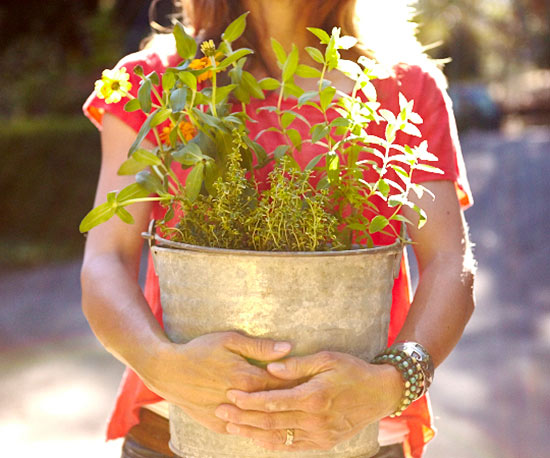






Let go of "landscape" and think containers and filling nooks and crannies with life. Grow the things that elevate your aesthetic, such as the flowers and flavors that put a skip in your step. A little can go a long way.
Find the things that make you happy and grow them. Whether it be basil for your favorite pesto, succulents for your windowsill, or pineapple sage for pollinators and cocktails. Whatever it is, start there. Choose one or two or a handful. Cultivating the things your love means every minute counts that much more.
Containers make great gardens, allowing you to focus your attention on the space your plants need to grow. Pots, boxes, vertical planters, and raised beds define your garden, telling you where to weed, what to care for, and what needs to be watered.
At its simplest, all you need is sun, soil, water, and air. But many plants also need shelter from wind or animals such as deer and gophers. Take notice of who might be out to eat your garden before you do, and pinpoint your sunniest locations. A veggie garden needs full sun (a minimum of six hours direct sunlight), but most warm-season crops grow better with more.
Determine how to water your garden before you begin -- when left to our own devices, most of us don't water correctly. Plus drip systems, soaker hoses, and nanny pots are far more effective, preserving soil structure and ensuring plants get exactly what they need. Once you have a system in place, you'll feel like your garden practically runs itself, and you can simply sit back and enjoy.
In nature, water runs downhill. So, too, should water in your garden. Make sure you have drain holes on the sides and bottom of pots, boxes, or raised beds. Add drain rock then an organic planting mix top dressed with compost or mulch. Next, tend your soil. Soil health and structure is key to a vibrant garden. Over time, replace or replenish soil with organic compost or, for smaller containers, an organic potting mix.
Who doesn't love a trip to the nursery? A gardening workshop might be out of the question, but a visit to your local nursery run by seasoned hands can be a crash course in the making. Ask questions and pay attention to what they have to offer. This is a perfect place to start when you're figuring out what you can grow successfully in your area.
Keep it close. Place your garden where you can see it, where you pass by, or where you like to be. This immediately changes the gardening experience, taking it from burden to lifestyle. Weeding, time spent outside, pest and quality control become part of everyday living -- a few minutes spent here and there, not a time-consuming chore.
If your plant looks happy, it probably is. Watering or fertilizing it more won't make it happier. In fact, it may do the opposite. Believe it or not, there is such thing as over-tending your garden.
Expect one-hit wonders, consistent winners, and losing battles. Don't wait for everything to be just-so to start planting. In fact, waiting may only make it harder. Embrace the fact that gardens are the definition of change. Some plants thrive while others die; you and your garden will evolve together.
Copyright © www.100flowers.win Botanic Garden All Rights Reserved